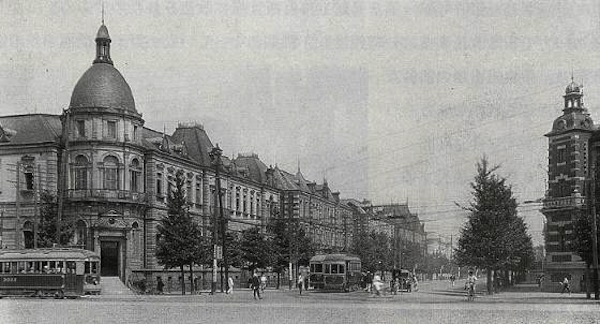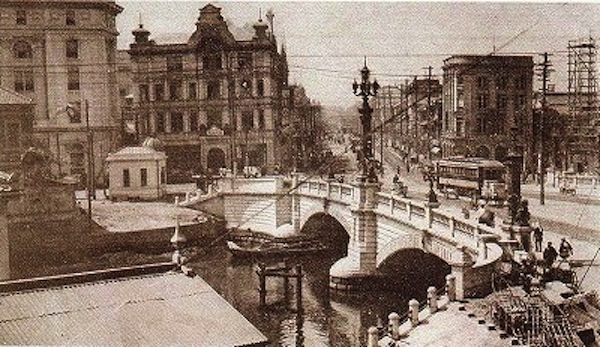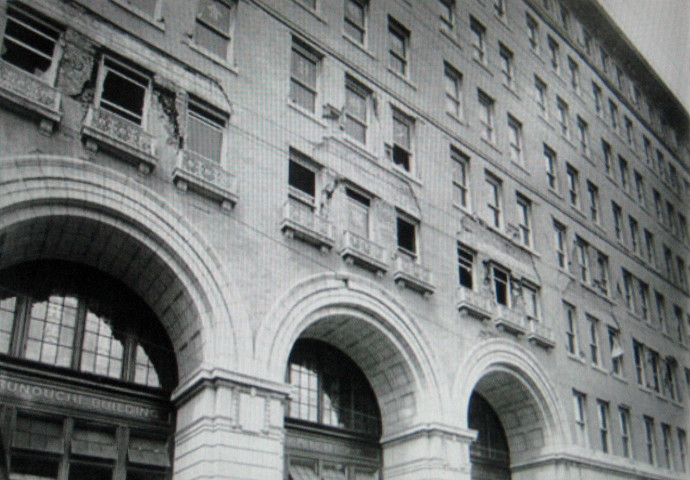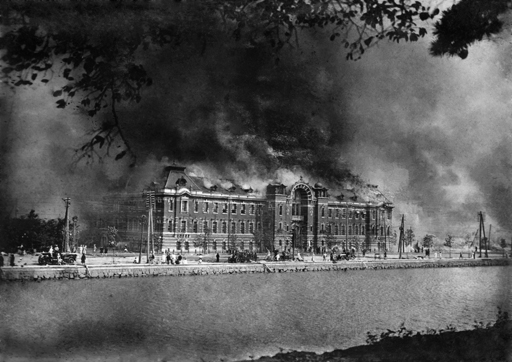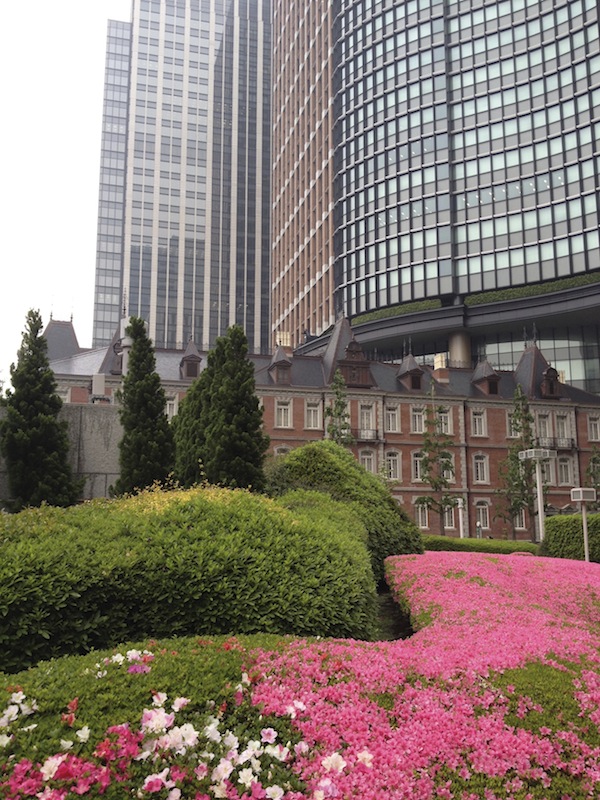One of my favorite areas of Tōkyō is Marunouchi, the commercial district located between Tōkyō Station and the Imperial Palace. I love the architecture, both old and new, the wide, uncluttered tree-lined streets, the proximity to the Imperial Palace, and, well, I could go on and on.
The land where Marunouchi stands today was originally an inlet of Edo (Tōkyō) Bay. It was reclaimed in the late 1600s and during the Edo Period (1603-1868) feudal lords close to the Tokugawa Shogunate, known as fudai daimyō, maintained homes in the area. Following the Meiji Restoration, the land was used as a barracks and parade ground for the Imperial Army. And around 1890, the land was bought by the Mitsubishi company which began to develop it as a center for business. Mitsubishi still owns much of that prime real estate today.
The first "Mitsubishi Ichi-gō Kan" (Building No.1) was completed in 1894 (Meiji 27). It was followed by the construction of a large number of similar brick buildings, and by the early 1900s the area was nicknamed Icchō Rondon (一丁 ロンドン One-Mile London) because of its resemblance to the British capital.
Tōkyō Station, designed by Kingo Tatsuno, was completed in 1914.
As is sadly all too common in Japan, very little of Icchō Rondon remains today. Except for Kingo Tatsuno's Tōkyō Station, and the Ministry of Justice building near Hibiya Park, I don't think any buildings from the era have survived. If you ask your Japanese friends why, they'll probably shrug. Push them a little and they might venture a guess that the area had been destroyed in the Great Kantō Earthquake of 1923.
There is some truth in that. The massive quake, which killed an estimated 140,000 people in the fires alone, destroyed much of the city, including parts of Marunouchi.
Damage to the Marunouchi Building. The original building was completed in 1923. Today's building was completed in 2002.
Metropolitan Police Department burning at Marunouchi. Going, going, . . .
The earthquake, however, explains only part of the story: many of Marunouchi's brick and stone buildings, though damaged, continued to be used long after the Great Kantō earthquake.
The aerial bombings of Tōkyō during the Pacific War also took their toll. B-29 raids from the Marianas began on 17 November 1944 and continued right up until the day Japan capitulated on 15 August 1945. The Operation Meetinghouse air raid of 9–10 March 1945 is estimated to be the single most destructive bombing raid in history, wiping out more than 50% of the city.
For more on the war and the bombing of Japan, watch the documentary "Victory in the Pacific by WGBH's American Experience.
I have no idea when these photos were taken. Many of the modern-looking buildings were built in the 30s. The Dai-ichi Seimeikan which housed the GHQ of the occupational forces was built in 1938. The Tōkyō Chūō Post Office (the white building just left of Tōkyō Station) was built in 1933. The outer portion of the post office remains today and was incorporated into the design of the new Kitte Building that was finished in 2012.
This photo was probably taken in the sixties, judging by the extent of development. It amazes me that the Japanese will build something, tear it down, build something else, tear that down, then build yet another building. There doesn't seem to be a sense of permanence in the designs, something that is not new to Japan. The Dai-ichi Seimeikan replaced a beautiful brick building. (You can see it in the second photo from the top. It is the building on the left side of the street with the street car in front of it.) The exhibit at Seimeikan says that it was a bold move by the architects to do away with the original building. Bold? I'd say it was egotistical and rash. They took a a real gem of a building and replaced it with something you see in pretty much any city today. But, hey, that’s progress!
Marunouchi today
Mitsubishi's Ichigōkan today. Completed in 2009, it is an exact replica of the original Ichigōkan which had stood on that corner from 1894 until 1968. Wouldn't it have been better, and certainly cheaper, to just keep the original Ichigōkan? Apparently there was a movement to try to protect the building, but they failed to keep it from being torn down. Sigh.
Frank Lloyd Wright's Imperial Hotel, Tōkyō suffered a similar fate. Although it managed to come through both the Great Kantō earthquake and World War II unscathed, it was no match for the wrecking ball. Fortunately, the central lobby and reflecting pool were disassembled and rebuilt at The Museum Meiji Mura in Nagoya.


